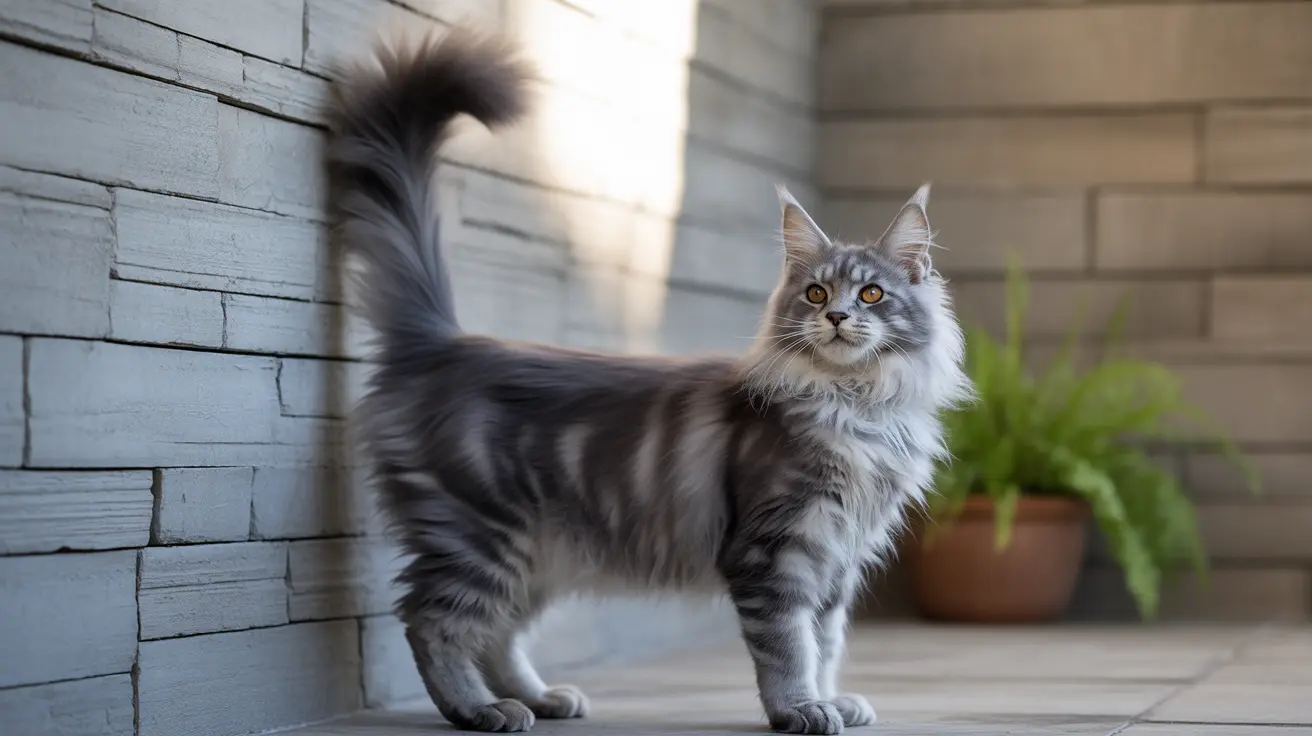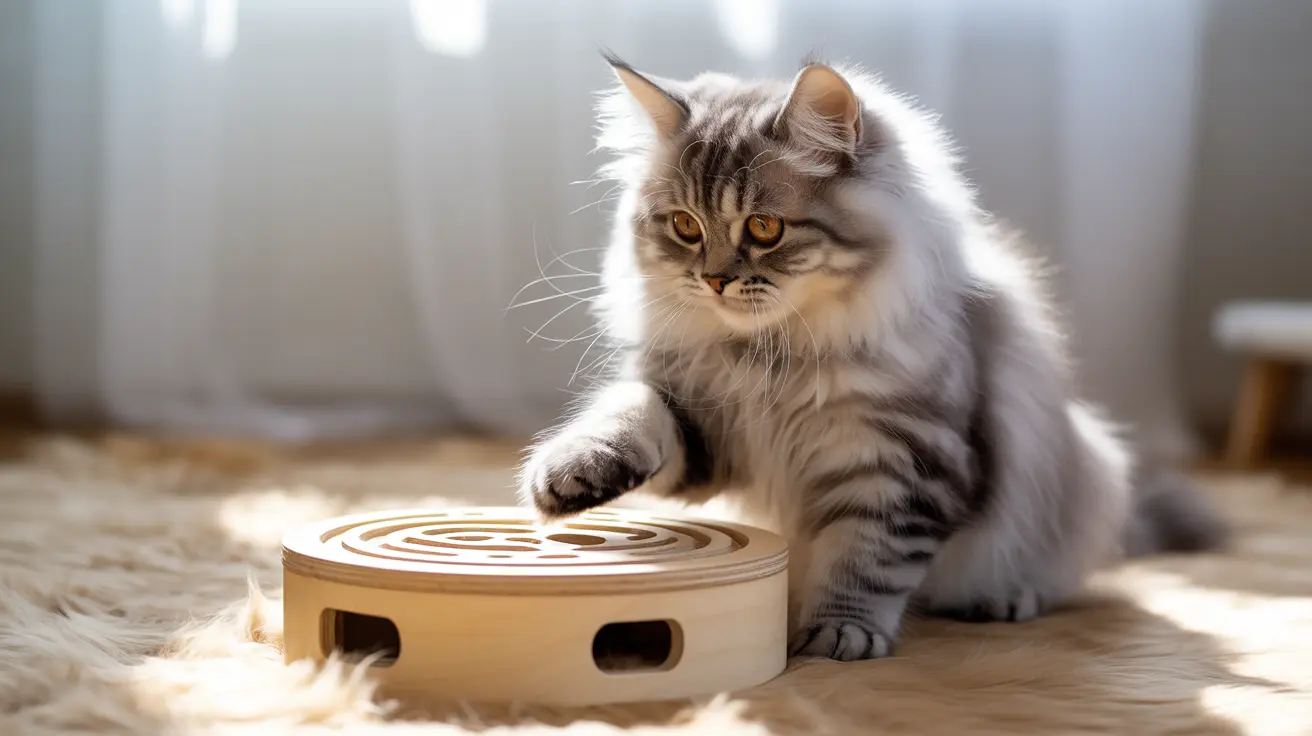When it comes to understanding our feline companions, few behaviors cause as much confusion and concern as cat spraying and inappropriate urination. While both involve the release of urine, these distinct behaviors serve different purposes and require different approaches to address them effectively.
As a cat owner, recognizing the difference between cat spraying and normal urination is crucial for maintaining both your cat's health and your home's cleanliness. This comprehensive guide will help you understand these behaviors, their causes, and most importantly, how to address them appropriately.
Whether you're dealing with a new marking issue or seeking to prevent future problems, understanding the underlying causes and solutions can make a significant difference in your cat's well-being and your household harmony.
Distinguishing Between Cat Spraying and Urination
The fundamental difference between cat spraying and urinating lies in both the behavior's purpose and execution. Understanding these distinctions is crucial for proper treatment and prevention, as what works for one may not address the other.
Spraying Characteristics
- Standing position with tail raised and quivering: Spraying cats typically stand upright, sometimes backing up to vertical surfaces, with their tails held high and often quivering as they release urine.
- Small amount of urine deposited on vertical surfaces: The amount is usually minimal, and the choice of vertical locations—like walls or furniture—helps maximize the smell for communicative purposes.
- Strong, pungent odor that lingers: Sprayed urine is often more concentrated and carries a noticeably stronger scent than ordinary urination.
- Usually occurs as cat marking behavior: Spraying is a way for cats to mark territory and send signals to other cats about their presence and social status.
- Often triggered by territorial or emotional needs: Events that evoke insecurity, such as new pets or changes at home, may prompt a cat to spray.
Urination Characteristics
- Squatting position on horizontal surfaces: Normal urination involves the cat squatting on flat surfaces, typically inside a litter box.
- Complete emptying of bladder: Urinating cats void their entire bladder, producing a larger volume of liquid.
- Normal urine odor: The scent is less intense, unless there is an underlying medical issue.
- Primarily serves biological function: The main goal is elimination of waste, not communication.
- Typically occurs in litter box unless there are underlying issues: Deviations often point to medical or environmental problems.
Understanding the Root Causes of Spraying
Territorial Marking
Marking territory is a natural instinct for cats, especially in multi-cat households where boundaries may be unclear. Through spraying, cats communicate ownership, reduce the risk of conflict, and establish their place within a shared environment. Even single-household cats may spray if they sense outdoor cats nearby.
Stress and Anxiety Factors
Various stress triggers can cause a cat to begin spraying as a form of coping or communication. Common contributing factors include:
- Changes in routine or environment: Cats are creatures of habit. Even minor disruptions, like rearranging furniture or altering feeding times, can trigger anxiety.
- Introduction of new pets or family members: New arrivals—whether animal or human—can make a cat feel threatened or insecure, prompting marking behaviors.
- Moving to a new home: Major life changes, such as a move, introduce many unfamiliar scents and spaces, pushing cats to re-establish boundaries.
- Conflicts with other cats: Tension or competition between cats over resources like food or litter boxes may increase marking frequency as each cat asserts its presence.
Medical Considerations for Inappropriate Urination
Before assuming that inappropriate urination is simply a behavioral issue, it is vital to rule out medical causes, as untreated conditions can compromise your cat's health. Common health concerns that can lead to urination outside the litter box include:
- Urinary tract infection: Infections can cause increased urgency and discomfort, making it difficult for cats to reach the litter box in time.
- Bladder stones or crystals: These can irritate the urinary tract, leading to frequent or painful urination in inappropriate places.
- Kidney disease: Cats with kidney issues may drink and urinate more, occasionally resulting in accidents.
- Diabetes: Increased thirst and urination due to diabetes can overwhelm normal toilet habits.
- Arthritis affecting litter box access: Painful joints may make it hard for older cats to climb into high-sided litter boxes or reach them in time.
Consulting a veterinarian to diagnose and address any underlying medical issues is an essential first step in resolving inappropriate urination.
Creating a Stress-Free Environment
Reducing stress is critical in preventing both spraying and inappropriate urination. Cats thrive in predictable, safe environments. To help your cat feel secure, consider these solutions:
- Install cat pheromone diffusers: Synthetic pheromones can help calm anxious cats and reduce the likelihood of spraying.
- Provide multiple resources in multi-cat households: Ensure each cat has easy access to food, water, beds, and litter boxes.
- Create safe spaces and hiding spots: Furnish your home with cozy areas where your cat can retreat when feeling stressed or threatened.
- Maintain consistent daily routines: Feed and interact with your cat at regular times to provide stability.
- Introduce new environments or people gradually: Give your cat time to adjust to change by slowly exposing them to new situations and individuals.
Managing Multi-Cat Households
Households with more than one cat face a unique set of challenges related to territory and resource allocation. To reduce stress, minimize marking, and maintain harmony, follow these multi-cat management tips:
- Provide adequate resources for each cat: Food bowls, water dishes, litter boxes, scratching posts, and resting spots should be plentiful and spread out to avoid competition.
- Create vertical space with cat trees: Vertical territory gives each cat the option to claim their own spot and escape if they feel threatened.
- Maintain multiple litter box locations: The rule of thumb is one box per cat, plus one extra, placed in quiet, accessible areas.
- Monitor and manage inter-cat relationships: Watch for bullying or persistent tension and intervene if necessary, perhaps by separating resources or using calming products.
- Address cat anxiety promptly: Use play, positive reinforcement, and, if needed, consult with a behaviorist to ease anxieties before they become problematic.
Prevention and Cleaning Strategies
Preventing cat accidents is best accomplished through a proactive and thorough approach. Consistent cleaning and maintenance help discourage repeat marking. Consider the following steps:
- Use enzymatic cleaners for marked areas: These specialized products break down urine on a molecular level, fully removing odor and discouraging your cat from remarking the same spot.
- Maintain clean litter boxes: Scoop boxes daily and wash them weekly. Cats prefer clean, odor-free spaces to do their business.
- Block views of outdoor cats: If your cat sees or smells other felines outside, it can trigger territorial marking. Use blinds or window coverings as needed.
- Consider spaying and neutering: Intact (unneutered or unspayed) cats are much more likely to spray. Having your cat fixed can greatly reduce marking behaviors, especially if done early.
- Address litter box avoidance promptly: If your cat avoids the box, evaluate box cleanliness, size, type of litter, and box location. Experiment with different configurations to meet your cat’s preferences.
Proper cleaning and prevention strategies are essential for breaking the cycle of marking behavior and maintaining a clean, comfortable home environment.
Frequently Asked Questions
- What is the difference between cat spraying and urination? Spraying is the act of marking territory with small amounts of urine, typically deposited on vertical surfaces, while urination involves the complete emptying of the bladder on horizontal surfaces, usually inside a litter box.
- Why do cats spray indoors? Cats may spray to mark territory, cope with stress, communicate warnings or invitations to other cats, or as a reaction to major changes at home.
- How can I tell if my cat is spraying or urinating? Spraying involves a standing posture, with the cat’s tail lifted and often quivering as they direct a stream of urine onto vertical objects. Urination is performed in a squatting position on the floor or inside a litter box.
- What medical issues cause inappropriate urination? Medical conditions like urinary tract infections, bladder stones, kidney disease, or diabetes can lead cats to urinate outside the litter box. Arthritis can also make box access difficult.
- How can I prevent cat spraying? Minimize stress, provide adequate resources, clean marked areas carefully, use pheromone products, and ensure your cat is spayed or neutered if appropriate.
- Does neutering stop spraying? Neutering often reduces or eliminates spraying, especially if the behavior has not become ingrained and the procedure is done before sexual maturity.
- Can stress cause cats to urinate outside the litter box? Absolutely. Stress or environmental changes are common triggers for cats to avoid their litter boxes and seek inappropriate places to eliminate.
- How should I clean areas where my cat sprayed? Use enzymatic urine-removing cleaners that neutralize odor completely, discouraging your cat from returning to the same spot.
- Should I punish my cat for spraying or urinating outside the box? No. Punishing a cat increases anxiety and usually makes the behavior worse. Focus on identifying and resolving the root cause instead.
- When should I consult a vet for urination issues? Contact a veterinarian promptly if inappropriate urination is frequent, sudden, or accompanied by other symptoms such as pain, blood in urine, or lethargy, as these may signal serious medical problems.
By understanding and addressing cat spraying and urination issues properly, you can create a harmonious environment for both you and your feline companion. Remember that patience, consistency, and proper veterinary care are key to resolving these challenging behaviors, ensuring a happy and healthy relationship between you and your cat.






